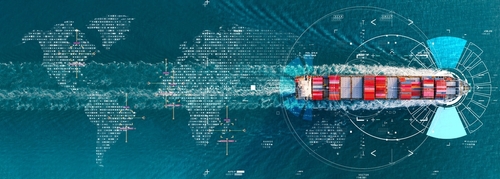Over the last month, I have been working with five companies that say that they want to implement an End-to-End (E2E) Supply Chain Strategy. However, when I hear their stories and get their PowerPoint slides outlining their design, I laugh. Why? The slides all look the same. And, they are anything BUT end-to-end.
Why does it matter? Nine out of ten companies are stuck. Organizations are unable to power progress on operating margin and inventory turns together in the same year. The answer lies with a new approach. Complexity has increased, and companies need to reach a better balance between profitability, cycles and complexity. They cannot today.
I love the fact that companies are stepping up to ask the questions, but I often find them asking the wrong questions. Here is what I see is missing:
–Strategic. Tactical. Operational. Executional. There our four distinct layers of planning functionality. For E2E processes, each needs to be redefined. Each layer of planning has a different time horizon, planning cycle and level of data granularity. It needs to be designed with the goal in mind. In the building of E2E planning processes, the supply chain systems needs to start at the channel and end with the supplier. The flows need to be bidirectional. Most companies start at the middle of the planning architecture with supply; not at the channel. And, the flows are sequential not bidirectional. For most this is a big change.
-Consumption Logic. Each layer of planning needs to be a market-to-market connector. There needs to be consumption and synchronization between the layers. The design needs drive synergy bottoms up and tops down. Most companies are not using the data that they have. For example, I have just finished interviewing thirteen Vendor Managed Inventory (VMI) leaders. In my interviews, no company has successfully integrated VMI into their E2E planning processes. This is sad. VMI was defined in the 1980s.
-Clear Definition of Each Planning Horizon. Each of the planning horizons need to be defined and redefined with new forms of analytics. I find that most companies have gotten quite muddled in these definitions, forgetting the basics of planning.
-Plan with the Goal in Mind. I also find that companies get over-zealous about a technology and use it without rethinking the planning architectures. Just because you have lots of data does not mean that it should be loaded for every cycle.
So, here is my challenge. Please rethink mental models. The traditional Advanced Planning Systems (APS) are not designed to be end-to-end. It requires a redesign.
Please let me know your thoughts.
We are also doing some research on supply chain visibility and the evolution of Supply Chain Business Networks. Supplier connectivity is important to build a true E2E process. We would love to help you benchmark your current process.

Thirteen Years a Blogger
Thirteen years. 600 posts. Where does time go? For over a decade, since founding Supply Chain Insights in 2012, I have pounded the keyboard, asking





